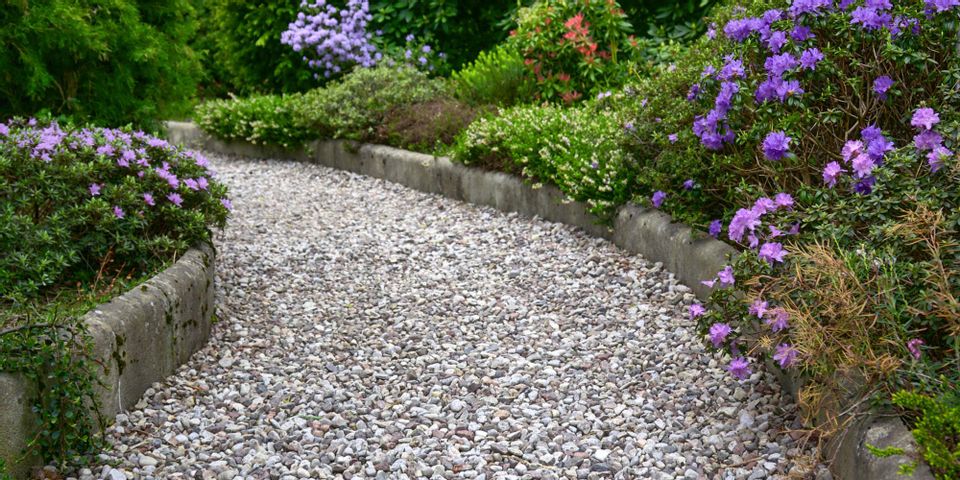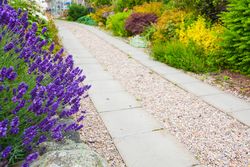4 Do's & Don'ts of Landscaping With Pea Gravel

Pea gravel consists of small stones from about 1/8 to 1/3 of an inch in diameter. Their unique size and shape are the result of natural weathering over time. These aggregate materials are perfect for a variety of applications in outdoor projects, from garden pathways to sitting areas. Here are some helpful do’s and don’ts of using pea gravel in your landscaping.
Do:
Use to Promote Drainage
 Pea gravel offers optimal drainage because it is heavy and has an impenetrable surface. Since it resists moisture, it allows fluids to drain quicker and keeps water from pooling around your plants. It also can cover large areas of soil, which prevents erosion.
Pea gravel offers optimal drainage because it is heavy and has an impenetrable surface. Since it resists moisture, it allows fluids to drain quicker and keeps water from pooling around your plants. It also can cover large areas of soil, which prevents erosion.
Rake Periodically
Over time, leaves collect on pea gravel, and weeds may pop up in the cracks and crevices. Bald spots can also develop due to inclement weather or frequent traversing. Use a gravel rake to smooth out the surface and control weeds and leaves.
Don’t:
Forget to Include Edging
Grass tends to grow along the borders of paths and patios, and aggregate materials often spread out of bounds onto lawns. Keep a well-defined edge and make lawn maintenance easier by installing plastic strips between the pea gravel and grass.
Neglect Replenishing
Replenish pea gravel to keep the surface well-manicured. First, remove weeds, and then add a layer of aggregates. For extra protection against weed growth and increased stability, remove your existing gravel and dig about six inches into the surface. Pour two inches of crushed rock and cover with three inches of pea gravel.
When you need gravel for your lawn and landscaping projects, get in touch with Ashcraft Sand & Gravel. They provide sand, gravel, and limestone to residential and commercial customers throughout Cleves, OH. Call (513) 367-5700 to order pea gravel for paths, patios, or driveways, and visit the website to learn more about their convenient delivery and pickup services.
About the Business
Have a question? Ask the experts!
Send your question

